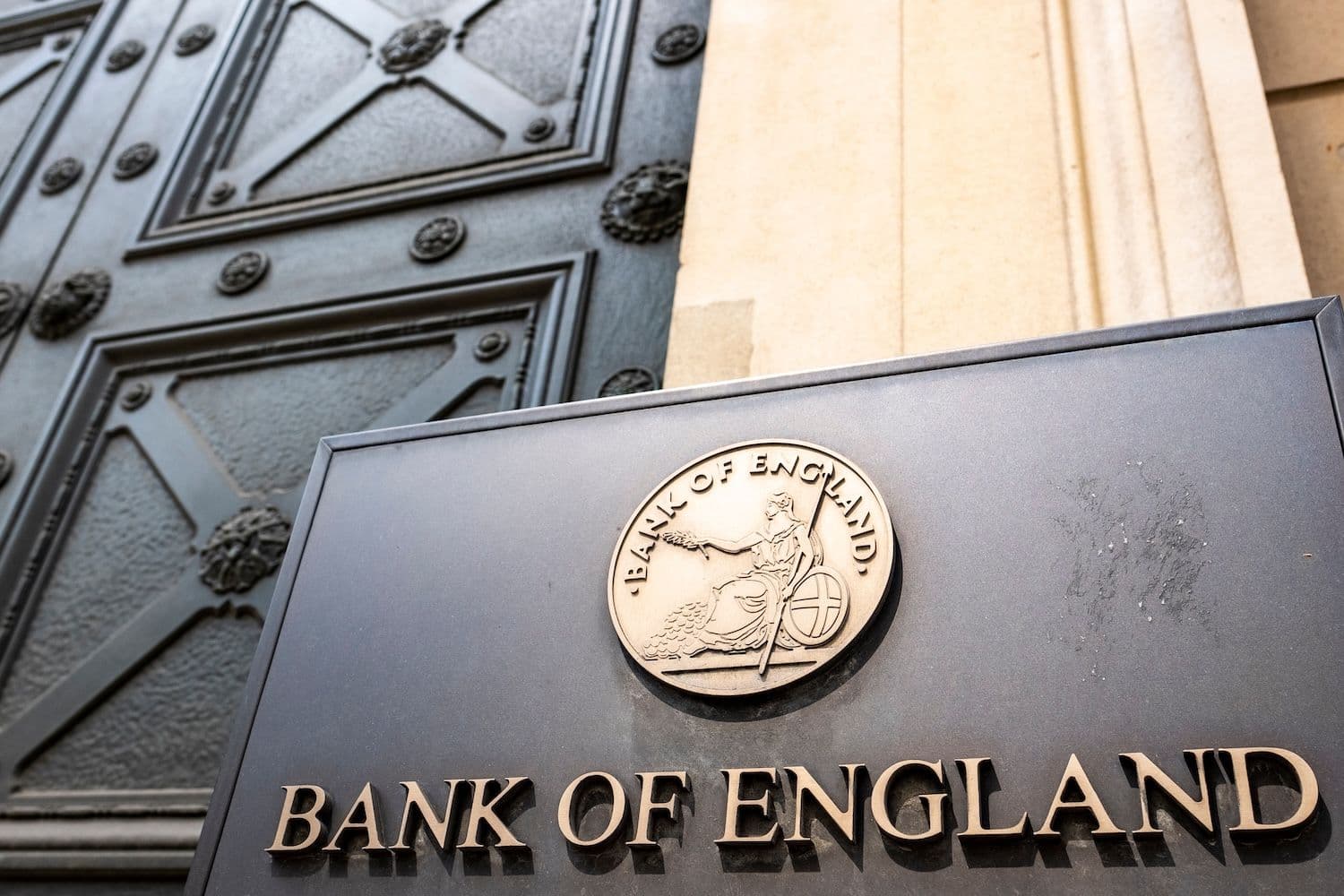The Bank of England is preparing to grant exemptions to its proposed stablecoin ownership limits, allowing certain digital asset firms including crypto exchanges to hold large amounts of the tokens, according to people familiar with the matter. The move marks a potential shift in the central bank's approach to digital currencies, as it also plans to permit regulated stablecoins as settlement assets in its experimental Digital Securities Sandbox.
What to Know:
- The Bank of England will exempt crypto exchanges and other firms from proposed stablecoin caps of £10,000 to £20,000 for individuals and £10 million for businesses, addressing industry concerns about operational feasibility.
- The central bank's Digital Securities Sandbox will initially allow firms to use regulated stablecoins tied to non-sterling currencies for settlement, enabling observation of real-world use cases.
- Governor Andrew Bailey's stance has evolved from warning that stablecoins threaten public trust in money to acknowledging their potential to drive innovation in payment systems.
Policy Reversal Takes Shape
The exemptions would address criticism from crypto industry groups and payment companies that have characterized the proposed caps as unworkable and potentially damaging to Britain's competitive position against the United States and European Union.
Bloomberg reported Tuesday that the changes will be detailed in a consultation paper expected by year's end.
The central bank plans to waive the restrictions for businesses requiring substantial stablecoin holdings to operate. Crypto exchanges, which facilitate trading between digital and traditional currencies, would benefit most from the exemptions. The Bank of England's Digital Securities Sandbox, designed to test new financial technologies in a controlled environment, will also incorporate stablecoins as a settlement mechanism.
Initially, the sandbox will permit firms to adopt regulated stablecoins pegged to currencies other than the pound for settlement purposes.
This approach allows regulators to observe how these digital assets function in practice while developing a more comprehensive policy framework, sources told Bloomberg. The experimental phase could inform future regulatory decisions about stablecoin integration into Britain's financial infrastructure.
The original proposal would have imposed caps of £10,000 to £20,000 on individual holdings of systemic stablecoins, with a £10 million ceiling for businesses. Sasha Mills, the Bank of England's executive director for financial market infrastructure, defended the limits as necessary to "mitigate financial stability risks stemming from large and rapid outflows of deposits from the banking sector" and to manage risks from newly recognized systemic payment systems during their scaling phase.
The restrictions mirrored the central bank's approach to the proposed digital pound, which aimed to prevent deposit flight from traditional banks.
Industry Pushback and Practical Concerns
Simon Jennings, executive director of the UK Cryptoasset Business Council, argued that "limits simply don't work in practice." He explained that stablecoin issuers lack visibility into token holders at any given moment, making enforcement dependent on "a costly, complex new system, such as digital IDs or constant co-ordination between wallets."
The criticism extended beyond operational challenges.
George Osborne, a former Chancellor who now serves on Coinbase's advisory council, warned in August that Britain risks being "left behind" in the second wave of digital assets if authorities fail to "catch up" with regulatory developments in competing financial centers.
Osborne characterized the potential transformation as comparable to Nigel Lawson's Big Bang financial deregulation of the 1980s.
His comments targeted both Bailey and the government's broader approach to cryptocurrency regulation. Osborne contended that waiting to evaluate the digital revolution while other financial capitals implement comprehensive frameworks for crypto asset platforms represents a strategic miscalculation.
Regulatory Evolution
The Bank of England previously indicated that any caps could be "transitional" measures while the financial system adapts to digital money's growth. The potential exemptions suggest movement away from Governor Bailey's earlier skepticism about stablecoins and their impact on monetary confidence.
Bailey recently acknowledged that it would be "wrong to be against stablecoins as a matter of principle."
He noted their potential to drive "innovation in payments systems both at home and across borders." The shift in tone represents a notable evolution from his previous warnings that stablecoins threaten to destabilize public trust in money.
The consultation paper will clarify how exemptions function in practice and which categories of firms qualify for relief from the ownership caps. The central bank's willingness to adjust its proposal before finalization reflects the complexity of regulating emerging financial technologies while maintaining competitive parity with other major financial centers.
Closing Thoughts
The Bank of England's planned exemptions to its stablecoin ownership caps signal a more pragmatic regulatory approach that balances financial stability concerns with industry operational needs. The exemptions, coupled with expanded sandbox testing, indicate Britain's attempt to remain competitive in digital asset regulation while addressing legitimate concerns about deposit flight and systemic risk.

